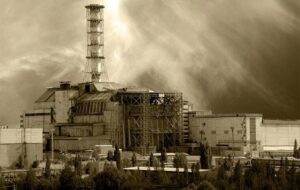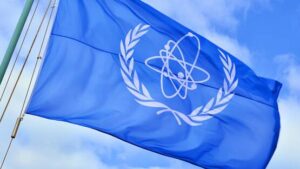
39 years since the Chernobyl disaster
On April 26, 1986, at 1:23 a.m. Kyiv time, the fourth power unit of the Chernobyl Nuclear Power Plant (ChNPP) suffered the worst man-made disaster in human history. As a result of a failed experiment to test safety systems, a reactor explosion occurred, leading to a massive release of radioactive substances into the atmosphere.
How the accident happened
The experiment on the fourth power unit was conducted to test the operation of the turbine generator in the event of a loss of external power supply. Due to a series of violations of instructions, design errors, and incorrect actions by personnel, the reactor lost stability, causing a thermal explosion and subsequent fire.
The first firefighters and plant workers who arrived at the scene of the accident were exposed to powerful radioactive radiation, often without adequate protection.
The scale of the disaster
In the first days after the accident, a radioactive cloud covered Ukraine, Belarus, and Russia, and then spread throughout Europe.
Approximately 116,000 people were urgently evacuated from Pripyat and the 30-kilometer exclusion zone.
Subsequently, another 220,000 people were resettled from contaminated areas.
According to experts, radioactive emissions from Chernobyl were dozens of times higher than the atomic bombs dropped on Hiroshima and Nagasaki.
Consequences of the disaster
Human casualties:
Immediately after the accident, about 30 people died from acute radiation sickness and injuries.
According to long-term forecasts, the effects of radiation have led to an increase in thyroid disease, cancer, and cardiovascular disease in tens of thousands of people.
Environmental consequences:
For decades, the exclusion zone remained extremely dangerous for habitation.
Some areas still have high levels of radiation contamination today.
Economic consequences:
The USSR suffered enormous economic losses estimated at billions of dollars.
Reconstruction work, the construction of a sarcophagus over the destroyed reactor, and the resettlement of the population all placed a heavy burden on the economy.
Global consequences
Rethinking security policy: After Chernobyl, nuclear power plant safety standards were revised around the world.
Intensification of the anti-nuclear movement: European countries began to develop programs to phase out nuclear energy or tighten controls over it.
Increased international cooperation: the disaster highlighted the need for global coordination in the event of nuclear accidents. New international agreements on nuclear safety were established.

International Nuclear Energy Agency Director-General Rafael Mariano Grossi has described the radiation levels at the Chernobyl nuclear power plant as normal after it was occupied by Russian troops, AFP reported.
“The level of radiation, I would say, is normal … There were certain moments when the level increased due to the movement of heavy equipment that Russian troops brought here, and when they left the station,” Grossi was quoted by AFP during his visit to the Chernobyl nuclear power plant on April 26.
The agency, which previously indicated that the IAEA Director General called the level of radiation abnormal, subsequently corrected his words on his Twitter.
As reported, Grossi visits the Chernobyl nuclear power plant on the anniversary of the accident on April 26. He led the agency’s mission to the station to deliver various types of radiation monitoring equipment, including radionuclide identification devices and gamma dose rate meters, to the Chernobyl nuclear power plant, as well as conduct radiological and other assessments. In addition, IAEA experts plan to repair the systems for remote monitoring of safeguards that stopped transmitting data to the agency’s headquarters in Vienna immediately after the station was seized by Russian invaders.
As noted by the IAEA, since the withdrawal of the Russian military from the Chernobyl nuclear power plant, Ukraine has taken significant steps to operate it safely, but the overall situation in the exclusion zone remains difficult, in part due to damaged bridges and demining activities.
The IAEA also noted that, in close coordination with Ukraine, it developed detailed plans for providing assistance in the security of the country’s nuclear facilities.
Russian troops left the Chernobyl zone on March 31 after a five-week stay in it since the capture at the beginning of the war on February 24. During their stay in the zone, the Russian military, in particular, built fortifications over a large area, including in the Red Forest, the dirtiest point in the zone. According to the head of GAZO Yevgeny Kramarenko, the risk of serious infection of the military and equipment from such actions is high. At the same time, according to him, during the retreat from Kyiv, Russian troops withdrew about 10,000 pieces of heavy equipment through Chernobyl, which, like the military, could also be contaminated with radiation when moving through dangerous territory. The movement of a large amount of military equipment provoked the rise of radiation dust and an increase in radiation in the zone.
According to the head of NAEK Energoatom Petr Kotin, in some places the radiation level was exceeded 50 times.